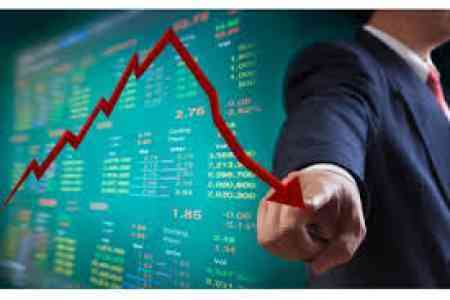


ArmInfo. In Armenia, economic activity growth slowed to 7.6% annually in January-September 2025 (from 8.7% in the same period of 2024). Moreover, the industrial sector, which was one of the growth drivers a year earlier, is weakening the pace of economic growth with the current downturn. According to preliminary data from the RA Statistics Committee, this is accompanied by a deterioration in the foreign trade trend from significant growth to a significant decline.
According to statistics, the slowdown in economic activity growth in January-September 2025 was largely due to a deterioration in the annual dynamics of the industrial sector, from 12.6% growth to 5.7% decline, and a significant slowdown in trade growth, from 19.5% to 3.5%. Significant growth was observed in the energy sector, rising from 1.2% to 4.6%. Meanwhile, the service sector accelerated its annual growth from 5.9% to 9.9%, with a more pronounced pace in the construction sector, rising from 15.9% to 20.7%. The statistical report for this period also includes data on the agricultural sector, indicating an acceleration in annual growth from 1.8% to 6%.
According to statistical data for January-September 2025, the trade sector holds the lead in absolute terms, with a volume of 4.7 trillion drams ($12.2 billion). The services sector ranks second, with 2.9 trillion drams ($7.6 billion), and the industrial sector ranks third, with 2.1 trillion drams ($1.5 billion). AMD ($5.3 billion), fourth place was the agricultural sector - AMD 686.6 billion ($1.8 billion), and fifth place was the construction sector - AMD 462.2 billion ($1.2 billion). Electricity generation in January-September 2025 amounted to 6,716.4 million kWh, of which 764.5 million kWh in September alone.
Meanwhile, in September 2025, compared to September 2024, economic activity, on the contrary, accelerated in growth to 10.5% (from 7% a year earlier), and in September alone, growth accelerated from 5.4% to 9.8% (compared to a slowdown in growth in September 2024 from 7.2% to 6.6%).
Moreover, in September 2025, industrial sector growth slowed from 10.7% to 5.1%, a more pronounced decline seen a year earlier-from 7.5% to 1.6%. Simultaneously, growth in the construction sector slowed in September, from 19.4% to 6.7%. In the services sector, growth in September worsened from 3.8% growth to a 2% decline, as was also observed in the trade sector-from 1.2% growth to a 1.3% decline. However, the energy sector's growth deteriorated even more sharply in September, from 10.6% growth to a 10.5% decline.
In annual terms (September 2025 to September 2024), all sectors demonstrated an upward trend: the construction sector showed the highest annual growth - 22%, followed by the energy complex - 13.2%, the industrial sector - 10.1%, the service sector - 7.9%, and the trade sector - 0.9%. A year earlier, in September 2024 to September 2023, all sectors also showed growth: construction - by 14.7%, trade - by 13.4%, the service sector - by 11.6%, the energy complex - by 7%, and the industrial sector - by 4.6%.
Against this backdrop, Armenia's foreign trade turnover in January-September 2025 amounted to 5.7 trillion drams ($14.6 billion), a decline of 39.3% year-on-year (compared to 73.5% growth a year ago). This is due to a significant decline in both exports and imports-by 46.8% and 33.4% year-on-year, respectively, while last year both indicators demonstrated significant growth-by 2.1 times (exports) and 54.2% (imports). As a result, the absolute value of exports for January-September 2025 amounted to 2.2 trillion drams ($5.7 billion), and imports-3.5 trillion drams ($8.9 billion).
In September 2025, compared to September 2024, foreign trade turnover declined by 21.6%, driven by a 24.4% decline in exports and a 19.5% decline in imports. A year earlier, in September 2024, compared to September 2023, foreign trade turnover grew by 22.4%, driven by a 38.9% increase in exports and an 11.9% increase in imports.
Starting in 2023, the methodology for calculating electricity generation volumes in statistical reports has changed; in particular, the volume of electricity generated by independent generators has now been included. For the agricultural sector, data is published only in quarterly and annual statistical reports. (The average dram exchange rate in January-September 2025 was 388.66 drams per US dollar.)